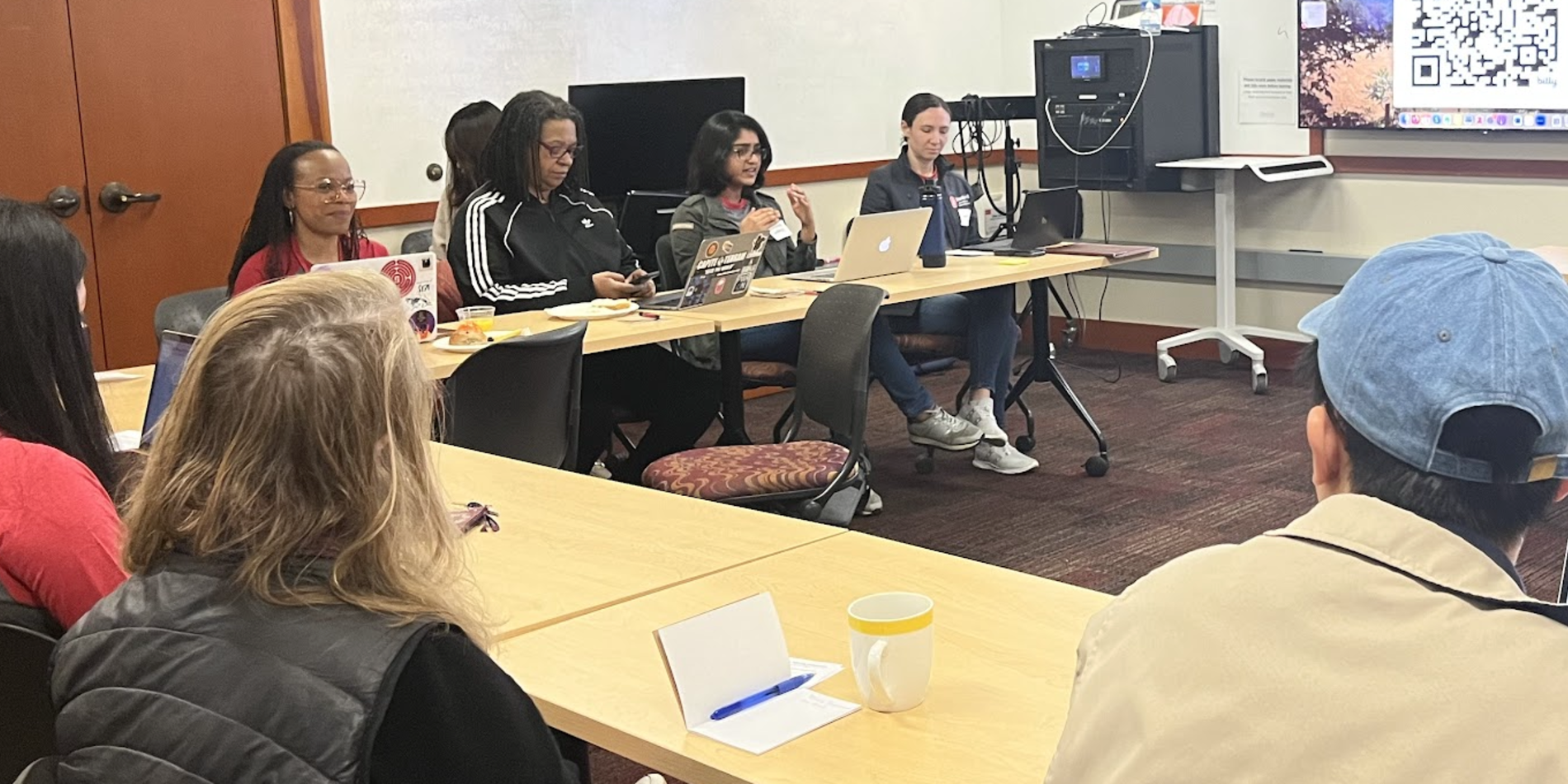From the Bridge: Cultural Rhetorics, Call and Response, and Innovating by Honoring Students' Right
By Adam Banks
In Beverly Moss’s book A Community Text Arises: A Literate Text and a Literacy Tradition in African American Churches, she examines the African American sermon as not just an important text in Black literacy traditions, but as a literacy event. From there, she asserts that what the Black sermon and call-and-response as form of discourse show us is that 1) literacy is a social, communal, endeavor and that 2) in the exchange of call-and-response, something bigger emerges than either the “text” (in this case, the sermon) or the responses. In fact, what emerges from that exchange is bigger—is different, even—than any sum or combination of that text and those responses.
Call-and-response has been heavy on my mind lately, not just because of our invitation to students to speak and write in response to Amanda Gorman’s Inaugural Poem, but because of my desire to open up my own course this quarter, “Cultural Rhetorics and the Future of Students’ Right to Their Own Language.” I appreciate so much the ways so many of you have responded to the invitation, and the course has truly become something bigger, better, because of your presence and your contributions.
In many ways, our collective work on Cultural Rhetorics has been a matter of call-and-response: in our Curriculum and Teaching and Tutoring Practices committees, you have examined these questions from the course level to the activity level. You have gathered in reading groups to work through the complexity of such a charge. You have created new courses and teaching materials and shared them generously with each other. And we have built our new Notation in Cultural Rhetorics together—a project that will invite wonderful co-inquiry with students and will, over time, influence all that we do together as an academic program.
One layer of that co-inquiry involved a slight gamble in my own teaching, both conceptually and practically: I decided to turn a Cultural Rhetorics course I had been working on for a couple of years into an explicit opportunity to reflect on a revised approach to SRTOL to meet our current moment, and to teach that course with a focus on highlighting the expertise of PWR lecturers to introduce students to this line of inquiry. When I made the invitation for members of the program to sit in sessions “jazz combo” style, I didn’t quite know what to expect in response, but quite a few of you joined in and made the set far better than it would have been had I tried to solo through it. We got to include work from Tessa Brown, Norah Fahim and Jennifer Johnson and be in conversation with them about their projects; Brittany Hull, Holly Fulton and Roberta Wolfson joined us to talk about their work; Sarah Pittock has been a regular guest and contributor, and Harriett Jernigan visited with us to lead us through a wonderful workshop she developed using Langston Hughes’s “Coffee Break” to demonstrate Universal Design for Learning and “making meaning making meaningful.” And, my partner in rhetoric, music and Star Trek Marvin Diogenes has been part of every session too.
I used the jazz combo metaphor in the invitation and in how I think about this work going back to Wynton Marsalis’s visit to Stanford in 2019 where he proclaimed that “jazz is a swinging conversation between parties who are willing to figure it out.” Jazz, of course, is all about call-and-response, both in the moment and with long running traditions and conversations. But more than that, in its combination of deep preparation and skill, improvisation in the moment, and Marsalis’s point about people being willing to “figure it out” in community, Jazz is also a great metaphor not only for rhetoric as a discipline and interdisciplinary pursuit, but for our work together in building an intellectual community that SRTOL calls us to be: a program where “we affirm strongly that teachers must have the experiences and training that will enable them to respect diversity and uphold the students’ right to their own language.”
Our ongoing growth in becoming *that* kind of intellectual community and developing the shared experiences that will enable us to honor SRTOL in all that we do—even on this campus—will continue to be in that call-and-response tradition. We will keep sounding out new ideas, affirming each other, reading, thinking, innovating and figuring it out, together, to offer a rhetorical education worthy of all of our students. My gratitude for you, and my pride in what you do grows constantly.



